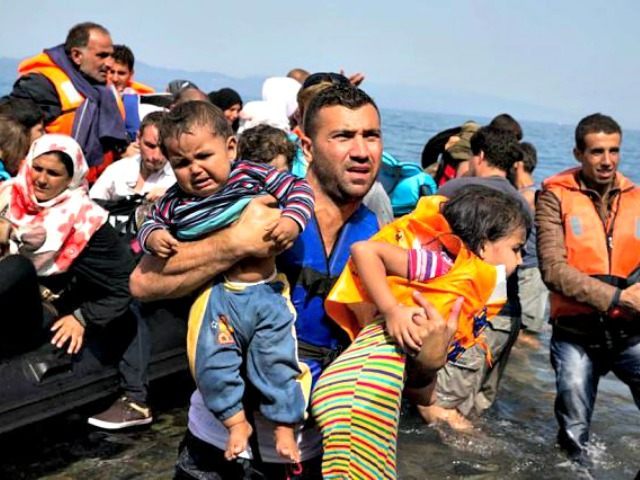Middle Eastern and African refugees in the United States are much more likely than refugees from anywhere else in the world to be on welfare, a government report from the Office of Refugee Resettlement (ORR)—provided to Congress and obtained by Breitbart News ahead of its public release—shows.
When it comes to cash assistance programs, a whopping 39.2 percent of refugees from the Middle East receive TANF—Temporary Assistance for Needy Families—cash benefits. A similarly high percentage of refugees from Africa—18.9 percent—are on TANF benefits, the chart on page 107 of the 112 page report shows. ( See below.) The data is based on Fiscal Year 2014 and was provided to Congress by ORR.
Those two regions—Africa and the Middle East—according to a breakdown in the previous year’s report, are mostly made up of predominantly Muslim countries. The countries that comprise the Middle East are all predominantly Muslim nations: Afghanistan, Iran, Iraq, Jordan, Kuwait, Lebanon, Saudi Arabia, Syria, Turkey, and Yemen.
African nations are listed as: Benin, Burundi, Central African Republic, Congo, Djibouti, Egypt, Eritrea, Ethiopia, Kenya, Liberia, Malta, Rwanda, South Africa, Somalia, Sudan, Tanzania, Uganda, and Zambia. Of those, Djibouti, Egypt, Eritrea, Somalia, and Sudan are predominantly Muslim nations, while most of the rest of the African nations here have sizable Muslim populations, according to the Pew Research Center.
According to the Center on Budget and Policy Priorities (CBPP), TANF is basically a program through which the federal government—using state governments, through block granting—puts cash right in the pockets of its beneficiaries.
CBPP writes about TANF:
States have used their TANF funds for a variety of services and supports, including: income assistance (including wage supplements for working-poor families), child care, education and job training, transportation, aid to children at risk of abuse and neglect, and a variety of other services to help low-income families. Since the four TANF goals are extremely general, states can use TANF funds much more broadly than the core welfare reform areas of providing a safety net and connecting families to work; some states use a substantial share of funding for these other services and programs.
The use of TANF benefits by refugees from the Muslim dominated regions of the world far exceeds the use of the program by Latin American or South/Southeast Asian refugees—of which only 8.1 percent and 6.2 percent, respectively, use.
It’s not just TANF benefits that Muslim refugees are dominating usage of compared to other refugees. A whopping 35.5 percent of refugees from the Middle East and 13.2 percent from Africa are on Supplemental Security Income (SSI), a program that provides monthly stipend checks to those with disabilities. Just 5.2 percent from Latin America and 21.5 percent from South/Southeast Asia are on SSI. Also, 20.3 percent from the Middle East—and 6.6 percent from Africa—are on a similar program called General Assistance, while only 6.2 percent from Latin America and 13.6 percent from South/Southeast Asia benefit from that program.
More importantly, however, when it comes to non-cash welfare programs, the refugees from predominantly Muslim regions are benefitting much more significantly than those from non-Muslim regions of the world.
An astounding 89.7 percent of refugees from the Middle East are on SNAP Assistance—or food stamps—while 80.3 percent of refugees from Africa similarly benefit from the program. Only 44.2 percent from Latin America are on the SNAP program, and 74 percent from South/Southeast Asia.
Medicaid numbers show similar results: The ORR chart found that 76.4 percent of Middle Eastern refugees, and 75.2 percent from Africa, are on Medicaid, while just 24.5 percent from Latin America and 50.2 percent from South/Southeast Asia benefit from the program.
This all means that compared to a similar report from ORR’s previous fiscal year, 2013, that food stamp usage is about the same, while TANF, Medicaid, and SSI usage are all on the rise among refugees from this region.

COMMENTS
Please let us know if you're having issues with commenting.